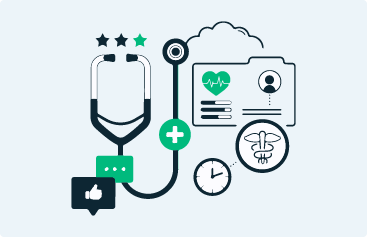blog


This blog is taken from a recent HealthStream webinar entitled “State of the Industry: What’s Next for Healthcare Quality and Safety in 2024?” The webinar focused on the results of HealthStream’s annual survey on the state of healthcare quality, compliance and safety. The survey provides insight into the outlook of the nation’s healthcare leaders amidst mounting financial and regulatory challenges.
The webinar was moderated by HealthStream’s Caroline Acree, Director, Marketing, Quality and Compliance and featured presenters:
In an effort to understand the outlook across the continuum of care, HealthStream surveyed 583 healthcare leaders to quantify the challenges and opportunities that will be shaping their plans in 2024.
Respondents represented leaders of quality, safety and culture initiatives in healthcare organizations.
The sample included respondents from both large and small organizations and included leaders from a variety of different disciplines, resulting in a high degree of confidence in these survey results. Because this is HealthStream’s second survey on these topics, some trending data is also available in the report.
Rose shared that many lingering issues still need to be addressed, even as leaders move on to new and emerging issues. Staffing issues continue to plague healthcare and have led to significant burnout and pressures on staff wellbeing as the industry continues to recover from the stresses caused by the pandemic. Declining revenues and a somewhat dreary revenue picture going forward compound the difficulties facing healthcare organizations as they try to find ways to address the growing state and federal regulatory burdens. In addition, healthcare organizations need to address diversity, equity and inclusion (DEI) and develop health equity strategies.
Rose shared that leaders acknowledged that their current programs could be better. When asked to rate DEI, compliance and education, policy and procedures management, and leadership development, programs leaders gave them moderate ratings with leadership development programs receiving the weakest score. Leaders rated the program on a 10-point scale and no program received a score of 8 or above, indicating that none of the programs are necessarily poor but that all could use improvement.
Leaders were also asked to share input on how these programs could be improved. Tied for first place were better, easier to understand educational content and more staff accountability. Training on changing regulations was a close third. Rose cited HealthStream’s move to a more engaging micro-learning format and other changes such as providing content based on a fifth-grade reading level, and audio libraries that make the content more user-friendly and accessible.
Next, Wilcox shared the components of a successful program. Wilcox acknowledged that there were actually multiple frameworks on which a good program could be built, and pointed out that these programs have three common elements.
While a significant majority (78%) of respondents indicated that their budgets would remain the same in 2024, there were three initiatives that emerged as priorities. As budgets remain stagnant, Rose pointed out that leaders would need to focus on a limited number of initiatives. Respondents gave priority to compliance training, quality assurance, and leader empowerment.
While a majority (66%) of respondents indicated that they worked with an outside training and education partner, 33% are still using an internally developed program. Healthcare organizations are dealing with up to 629 different regulations annually. Creating, maintaining and managing the education necessary on the regulatory front alone is a daunting and time-consuming task. Rose pointed out that there is comfort in having a team of people working with your organization to ensure that regulatory information and the corresponding education is current. In addition, education partners are able to apply best practices in educational design to build engaging and up-to-date content.
Rose encouraged leaders planning 2024 initiatives to consider whether or not they had adequately resourced their initiatives and encouraged them to support their programs with effective and efficient education and a culture of supportive leadership. Contact HealthStream today to learn more about how to support your 2024 quality and safety initiatives.
HealthStream’s learning management system and healthcare training solutions support medical training initiatives and allow for the best patient care.
View All Learning & PerformanceExpand the decision-making skills and effectiveness of your healthcare workforce with HealthStream's workforce development programs and services.
View All Clinical DevelopmentComprehensive, industry-leading provider onboarding and credentialing software that validates health outcomes and supports provider assessment.
View All CredentialingMake sure your healthcare staff can schedule out appointments and work schedules with ease using our line of nurse scheduling software solutions.
View All SchedulingWhen you enact HealthStream's quality compliance solutions, you can do so with the confidence your healthcare organization will meet all standards of care.
View All Quality & ComplianceUtilize patient access solutions and advanced reimbursement solutions to manage clinical denials and improve your organization’s reimbursement strategy.
View All ReimbursementLearn about our advanced resuscitation training solutions. Our solutions are designed to help improve patient outcomes.
View All Resuscitation